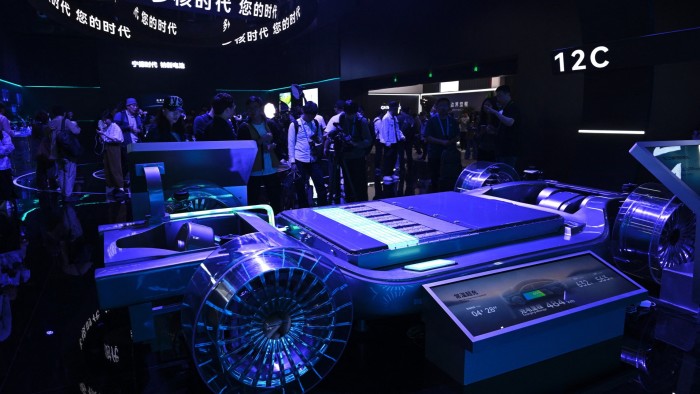Stay informed with free updates
Simply sign up to the Electric vehicles myFT Digest — delivered directly to your inbox.
CATL has unveiled upgraded battery cells it claims can offer faster charging for electric vehicles than its rival BYD, putting the two Chinese groups ahead of competitors in the race to overcome a major barrier to the shift away from petrol vehicles.
The world’s biggest electric vehicle battery maker said on Monday that a new version of its flagship Shenxing battery cell could offer a 520km range from just five minutes of charging time.
Last month, BYD shocked the industry by unveiling a charging system that could add about 470km in range to its batteries in about the same time.
The claims by the Chinese battery groups would put them ahead of major western rivals. At present, Tesla vehicles can be charged up to 200 miles (321km) in added range in 15 minutes, while Germany’s Mercedes-Benz recently launched its all-electric CLA compact sedan, which can be charged for up to 325km within 10 minutes using a fast-charging station.
Analysts have said the deployment of high-speed charging systems from BYD and CATL will help to eradicate consumer fears about EV driving range, even though there are questions as to how fast the companies can bring these technologies outside China amid rising geopolitical tensions.
The second generation of the Shenxing battery, which boasts a range of 800km on one charge, can achieve a peak charging speed of 2.5km per second, the company said at a media event ahead of this week’s Shanghai auto show.
“We look forward to collaborating with more industry leaders to push the limits of supercharging through true innovation,” said CATL’s chief technology officer Gao Huan, adding that he wanted the new batteries to become “the standard for electric vehicles”.
Analysts at Bernstein said the latest progress meant that charging speeds had more than doubled in the past year and “increased tenfold over the past 3-4 years”.
Huan said the new Shenxing battery would be installed in more than 67 EV models this year. He later told reporters that energy density would not be sacrificed as a trade-off for fast charging.
During its tech day, CATL also unveiled its new sodium-ion battery, which it said would go into mass production in December. The battery brand called Naxtra is able to give a range of about 200km for a hybrid vehicle and 500km for an electric vehicle, according to Huan.
Sodium-ion batteries are seen as a cheaper and safer alternative to the lithium-based batteries widely used for energy storage, because they work better at both very high and low temperatures. But the amount of energy they can produce relative to their size has long lagged behind lithium batteries, making sodium cells impractical until now.
The new technology has also been closely watched as a potential solution to reduce the world’s dependence on China for critical minerals, since sodium-ion batteries do not use lithium resources.
At the event, Huan claimed the new sodium-ion battery would enable the industry’s shift from “single resource dependence” to “energy freedom” and reshape the global energy landscape.
He added that he was in discussions with several companies about using sodium-ion batteries in their vehicles.


